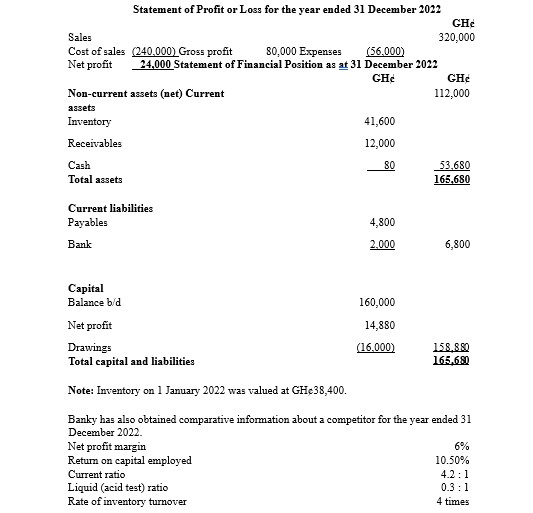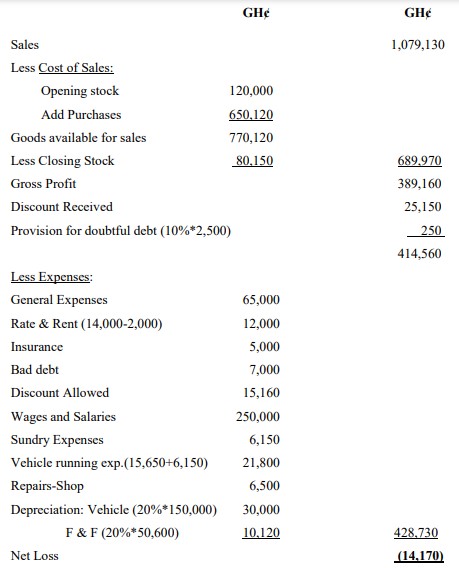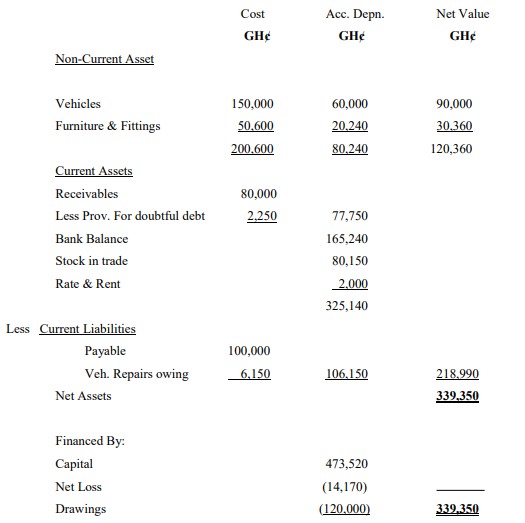- 20 Marks
Question
Given below are items of “Revenue” and “Capital” expenditure:
(i) A number of new cars that had recently been cleared by a motor car dealing company.
(ii) Two new motor boats acquired by a ferry service agency.
(iii) Vacant houses owned by an estate developing company in respect of which negotiations are ongoing for assistance for their sale to prospective landlords.
(iv) New buildings acquired for the purpose of holding the items of plant and machinery belonging to a detergent manufacturing company.
(v) Cost of acquiring a leasehold property for office use.
(vi) Granites purchased by an engineering contractor for use at a construction site.
(vii) Cost of rehabilitating a dilapidated housing unit owned by an estate developer.
(viii) Repairs to plant and machinery in a manufacturing company.
Required:
a. For each of the above, state whether it is a “Revenue” or “Capital” expenditure. (4 Marks)
b. State how each will be recognised in the statement of profit or loss and the statement of financial position as the case may be. (12 Marks)
c. State how the non-current assets register will be affected by any of the transactions. (4 Marks)
Answer
(a) Classification of Expenditure:
| Item | Type of Expenditure |
|---|---|
| (i) A number of new cars that had recently been cleared by a motor car dealing company. | Revenue |
| (ii) Two new motor boats acquired by a ferry service agency. | Capital |
| (iii) Vacant houses owned by an estate developing company in respect of which negotiations are ongoing for assistance for their sale to prospective landlords. | Revenue |
| (iv) New buildings acquired for the purpose of holding the items of plant and machinery belonging to a detergent manufacturing company. | Capital |
| (v) Cost of acquiring a leasehold property for office use. | Capital |
| (vi) Granites purchased by an engineering contractor for use at a construction site. | Revenue |
| (vii) Cost of rehabilitating a dilapidated housing unit owned by an estate developer. | Capital |
| (viii) Repairs to plant and machinery in a manufacturing company. | Revenue |
Explanation:
- Revenue Expenditure: Costs related to the daily operations, which do not provide long-term benefit, such as the purchase of inventory (item i), maintenance and repairs (item viii).
- Capital Expenditure: Costs incurred to acquire or improve a long-term asset, which will provide benefits over time, such as purchasing new boats (item ii) and buildings (item iv).
(b) Recognition in Financial Statements:
| Item | Statement of Profit or Loss | Statement of Financial Position |
|---|---|---|
| (i) A number of new cars that had recently been cleared by a motor car dealing company. | Cost of Goods Sold / Inventories | Current Asset – Inventories |
| (ii) Two new motor boats acquired by a ferry service agency. | Depreciation Expense | Non-Current Asset – Property, Plant, Equipment (PPE) |
| (iii) Vacant houses owned by an estate developing company in respect of which negotiations are ongoing for assistance for their sale to prospective landlords. | Sales Revenue (upon sale) | Current Asset – Inventories |
| (iv) New buildings acquired for the purpose of holding the items of plant and machinery belonging to a detergent manufacturing company. | Depreciation Expense | Non-Current Asset – Property, Plant, Equipment (PPE) |
| (v) Cost of acquiring a leasehold property for office use. | Amortization Expense | Non-Current Asset – Leasehold Property (Intangible) |
| (vi) Granites purchased by an engineering contractor for use at a construction site. | Cost of Goods Sold / Work-in-Progress | Current Asset – Inventories / WIP |
| (vii) Cost of rehabilitating a dilapidated housing unit owned by an estate developer. | Depreciation Expense (if capitalized improvements) | Non-Current Asset – Property, Plant, Equipment (PPE) |
| (viii) Repairs to plant and machinery in a manufacturing company. | Repairs and Maintenance Expense | Not Recognized |
(c) Effect on Non-Current Assets Register:
- Item ii: Increase in the asset register with the addition of two new motor boats.
- Item iv: Increase in the asset register with the addition of new buildings.
- Item v: Increase in the asset register under leasehold property.
- Item vii: Increase in the asset register as rehabilitated housing units are capitalized.
Other items classified as revenue expenditure do not affect the non-current assets register.
- Topic: Elements of Financial Statements
- Series: MAY 2016
- Uploader: Joseph



